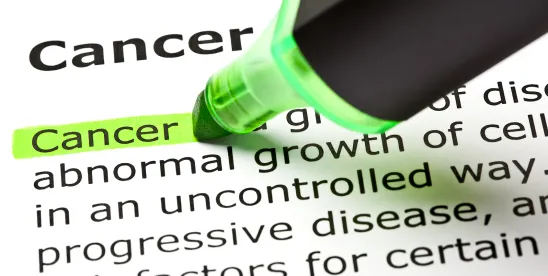Earlier this year, the International Agency for Research on Cancer (IARC) announced that it will be evaluating “automotive gasoline and some oxygenated additives” between February and March 2025. IARC Monographs – Volume 138 – IARC Monographs on the Identification of Carcinogenic Hazards to Humans (who.int). The additives to be evaluated include MTBE, ETBE, DIPE, and TAME. For most of these compounds, it is their first time being evaluated by IARC. Manufacturers, distributors, and consumers of automotive gasoline and oxygenated additives to gasoline should take note and prepare for IARC’s review.
What is IARC?
IARC is a branch of the World Health Organization (WHO) based in Lyon, France. Mandated by WHO to investigate potential causes of cancer, IARC conducts hazard evaluations of suspected carcinogens multiple times a year. The results of these evaluations are published in IARC “Monographs” — lengthy summary publications that discuss the existing literature and then apply a cancer classification based upon the Monograph Working Group evaluation. Under current IARC guidelines, it is impossible to classify any evaluated substance as “not carcinogenic” — the best the guidelines allow is “insufficient evidence to deem carcinogenic.” See IARC Update Frustrates Industry and NGOs, Chemical Watch, May 2, 2019 (discussing removal of “probably not carcinogenic to humans” classification from IARC preamble).[1] Additionally, IARC Monograph Working Groups — with few exceptions — are only allowed to consider as part of their review published data in the peer-reviewed literature regarding substances or exposures they evaluate. In the case of regulated substances, where many safety studies are submitted to regulators but are not placed in the peer-reviewed literature, this can create a situation where IARC Working Groups only review a subset of the available data on a given compound or exposure, potentially leading to erroneous conclusions based on incomplete data sets.
IARC and Litigation
IARC evaluations have been an issue in litigation for decades, starting first with the earlier iterations of asbestos cases in the 1980s and 1990s. In recent years, IARC evaluations of the chemical aspartame (found in Diet Coke) and perfluorinated chemicals have garnered widespread attention. See, e.g., Does Aspartame Cause Cancer? It’s Complicated, Chemical and Engineering News (April 28, 2024) (discussing aspartame classification and regulatory response).[2] Earlier IARC evaluations of the active ingredient in the pesticide Roundup (glyphosate), the active ingredient in the pharmaceutical drug Actos (pioglitazone), polychlorinated biphenyls (PCBs), and benzene either spurred or rekindled personal injury litigation surrounding those compounds.
In addition to inciting personal injury litigation, an IARC classification of “carcinogenic” (Group 1) or “probably carcinogenic” (Group 2A) results in automatic listing as carcinogenic under California’s Proposition 65 law. Under Proposition 65, bounties are available to private citizens or organizations who bring lawsuits claiming products contain levels of listed carcinogens that exceed the state’s safe harbor level. These Proposition 65 lawsuits have been brought alleging undisclosed carcinogens in products like coffee and French fries. See The Secretive Non-Profit Gaming California’s Health Laws, The Outline (June 18, 2018) (discussing Proposition 65 lawsuits).[3]
Some courts have expressed a healthy skepticism of IARC classifications. See Nat’l Ass’n of Wheat Growers v. Bonta, 85 F.4th 1263, 1278 (9th Cir. 2023) (“IARC stands essentially alone in its determination that glyphosate is probably carcinogenic to humans, while EPA, OEHHA, and regulators from around the world conclude that it is not.”). Despite that skepticism, IARC classifications continue to spur litigation time and time again, and most courts still allow the findings of IARC Working Groups to provide bases for claims against corporate defendants in a wide variety of cases.
Is IARC Independent?
IARC claims to maintain a strict conflict of interest policy, but unfortunately, this has been applied inconsistently to the makeup of their Working Groups in the past. For instance, IARC has previously allowed expert witnesses in litigation for plaintiffs to serve on working groups examining exposures about which they’re testifying while excluding from participation individuals with ties to companies producing the exposures. See, e.g. Newman v. Motorola, 78 F. App’x 292, 293-94 (4th Cir. 2003) (discussing expert testimony of Lennart Hardell — a later participant in IARC Working Group on RF Electromagnetic Fields) and https://www.reuters.com/article/us-health-who-iarc-special-report-idUSKCN0XF0RF (discussing exclusion from same working group of Anders Ahlbom). The makeup of the Monograph 138 Working Group is not finalized, though the time for nomination of Monograph Working Group members closed on June 3rd.
Given IARC’s disparate treatment of conflicts of interest in the past, it is possible that Working Group 138 will lack a balance of viewpoints, leading to classifications that do not reflect scientific consensus. Over the past decade, IARC classifications for a multitude of chemicals have been criticized by regulatory authorities as out-of-step with the scientific data. See Aspartame and Other Sweeteners in Food | FDA (discussing FDA disagreement with IARC as to aspartame); Glyphosate | US EPA (discussing EPA disagreement with IARC as to glyphosate).
Current Classifications of Gasoline and Oxygenated Additives
Overall, much of the evidence supportive of a carcinogenic hazard from gasoline and oxygenated additives is derived from animal and mechanistic studies. Though these types of studies are useful for hazard assessment, animal models “fall far short of being able to predict human responses.”[4]
Gasoline
EPA has determined that the epidemiologic evidence to classify gasoline as carcinogenic is “inadequate”[5] and the ATSDR noted at its last review that extant epidemiology studies had “inherent limitations that preclude[d] their use as evidence for an association between gasoline exposure and cancer.”[6] IARC last reviewed gasoline in 2012 and determined gasoline was “possibly carcinogenic” to humans.[7]
Oxygenated Additives
MTBE
The National Toxicology Program reviewed the carcinogenicity of MTBE in 1998 and determined at that time that rodent data was insufficient to classify MTBE as carcinogenic.[8] However, the ATSDR reported last year on significant tumor trends in rodent data for MTBE and cancer while also noting that no epidemiological data exists associating MTBE exposure with cancer in people.[9] IARC classified MTBE as “not classifiable” for cancer in 1999.
Other Additives
In 2021, EPA’s IRIS program described evidence as “suggestive” for cancer following inhalation exposure to ETBE and TBA.[10],[11] Certain researchers have also alleged DIPE and TAME cause carcinogenic effects in animals,[12] though the lab where the research was carried out has been heavily criticized for irregularities over the years.[13]
How to Prepare for a Monograph Review
Interested parties can prepare for Monograph 138 in a few ways:
- First, consider what data may not be available, but could be published in the peer-reviewed literature without negatively affecting business operations. The more data that can be made available in the literature, the more data IARC – under its guidelines — will be able to consider in its review. This is especially important in areas where little data supportive of safety may be publicly available, like mechanistic data or internal manufacturing worker monitoring studies. When it comes to mechanistic data, much of the data in the published literature is of low quality due to design issues (non-OECD, product of non-GLP lab, etc) but if it is the only data a Working Group has for use, it will be used. Greater availability of data supportive of product safety may help scientists at IARC avoid mistakes in classification, though even then, IARC may disregard certain information. See Tarone, Conflicts of interest, bias, and the IARC Monographs Program, 98 Regul. Toxicol. Pharmacol. A1-A4 (2018).
- Second, send observer(s) to the Working Group meeting in Lyon, France. Though individuals with IARC-designated conflicts of interest (i.e. consulting with industry) may not participate in Working Groups, they may observe much of the meeting. Sending observers may help interested parties gain valuable insight into the thought process of the Working Group and the evidence they found most compelling to their ultimate classification.
- Third, start educating the public and relevant regulatory and political bodies about what goes into an IARC classification. Specifically, the public and relevant bodies should be aware that IARC often relies upon incomplete data as the policies under which Working Groups operate do not allow for the review of data not in the peer-reviewed literature or publicly released by regulatory agencies. Thus, in many cases, IARC Working Groups do not consider many of the regulatory guideline studies necessary for product registration in the US and elsewhere. Additionally, interested parties should be aware than an IARC evaluation is a “closed” analysis – no peer review or public comment is permitted and no transcript is kept of the meeting or its deliberations. Shrouded in secrecy, exposing flaws in IARC’s process can be difficult after-the-fact. The public and relevant bodies should be informed that an IARC evaluation is a hazard assessment – in other words, it is a determination that a substance might be carcinogenic at some dose, but it does not address whether the dose people are exposed to in their daily lives could cause cancer.
- Finally, prepare for litigation – both of the Proposition 65 and personal injury variety. Involve in-house and potentially outside counsel in developing a strategy to deal with regulatory fallout in addition to potential litigation and customer concerns about a change in classification. During this preparation, be aware that many of the efforts outlined in the three bullets above may become subject to discovery.
By virtue of its association with the United Nations and by the participation of many individuals associated with impressive institutions, IARC Working Group classifications may be held in high regard by jurors and/or members of the general public. Early planning and a concerted, concentrated effort led by interested parties is key to ensuring sound science is employed in evaluations by IARC and other agencies reacting to IARC’s evaluation.
[4] Are animal models predictive for humans? - PMC (nih.gov). The U.S. Supreme Court and appellate courts have agreed. See General Electric v. Joiner, CITE; Hollander v. Novartis Pharms. Corp., CITE.
[5] Document Display | NEPIS | US EPA (EPA did find gasoline was carcinogenic in rodent models however).






 />i
/>i
